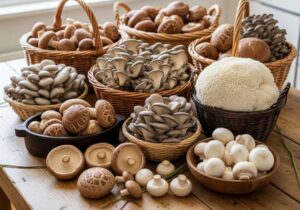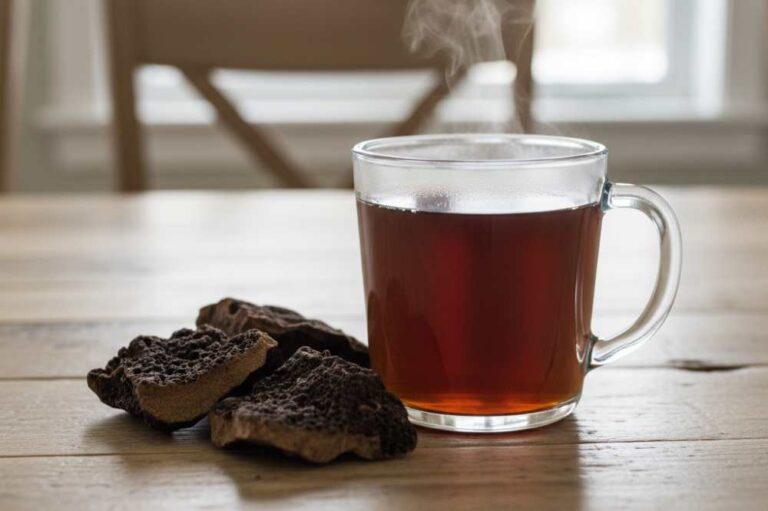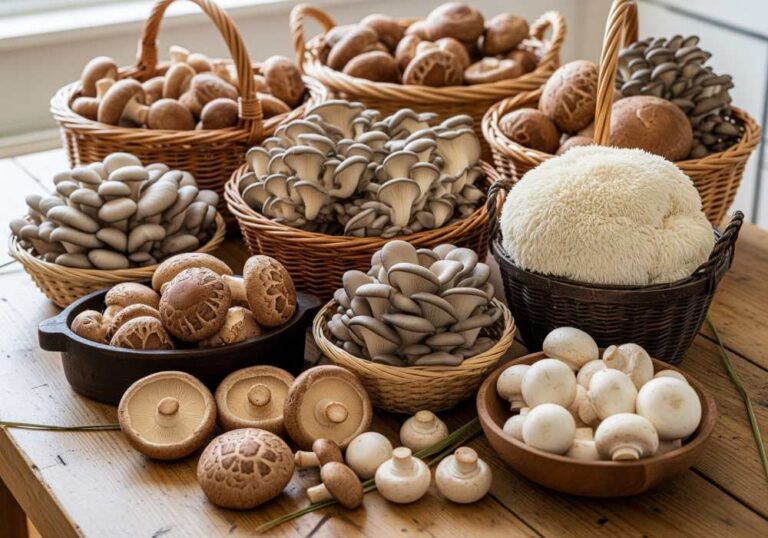When most people think of mushrooms in the kitchen, they imagine plump, juicy varieties like shiitake or button mushrooms that you can saute, roast, or toss into pasta.
Turkey Tail is different. It’s not like a culinary mushroom in the traditional sense. It’s thin, leathery, and woody—completely unsuitable for chewing. Yet, it holds a reputation that far surpasses many edible fungi for what it brings to the table in flavor, wellness, and tradition.
What excites me as someone who cooks with mushrooms is how this unassuming fungus can infuse broths, teas, and stocks with subtle depth. It isn’t a mushroom you eat—it’s a mushroom you extract.
Where to Find Turkey Tail Mushrooms?
If you’re confident in your identification skills, Turkey Tail mushrooms can be found year-round in forests, especially in damp, shaded areas with plenty of deadwood.
Some local farmers’ markets or specialty mushroom vendors sell fresh wild-harvested Turkey Tail. Dried Turkey Tail is widely available online and in health food stores. Dried mushrooms are a more practical solution for storage and just as effective for cooking.
If you are buying Turkey Tail for culinary or medicinal use, look for organic sources to avoid potential contaminants.
Preparing Turkey Tail Mushrooms for Cooking
Unlike oyster mushrooms or chanterelles that soften easily under heat, Turkey Tail remains tough no matter how long you simmer it. That’s why preparation is all about setting it up for infusion, not for chewing.
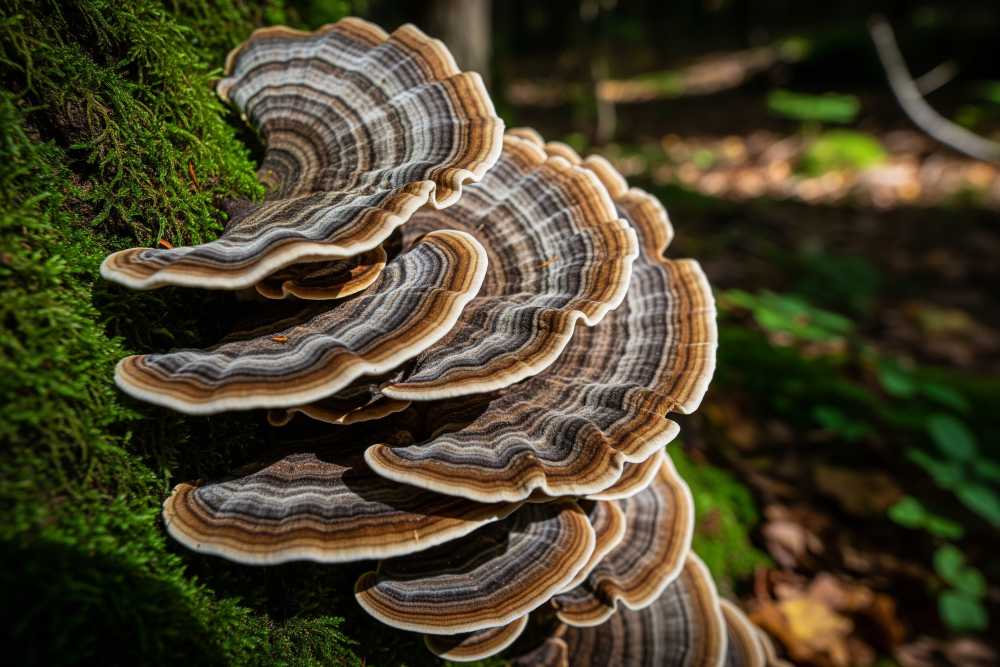
Cleaning Turkey Tail Mushrooms
Foraged mushrooms – If you picked them yourself, check for dirt, insects, or any moldy spots. Give them a light brush with a soft cloth. Avoid soaking them in water, as they can absorb too much moisture.
Store-bought fresh mushrooms – A quick rinse and pat dry should be enough to remove any surface debris.
Dried Turkey Tail—It doesn’t need cleaning, but a quick visual check ensures no unwanted bits are included.
Fresh vs. Dried: Which One to Use?
Fresh turkey tail is best for slow-cooked broths or teas where long-simmering helps extract flavor and nutrients. Dried turkey tail – More concentrated in flavor and easier to store. Needs to be rehydrated for certain uses. Still can go straight into simmering liquids for extraction.
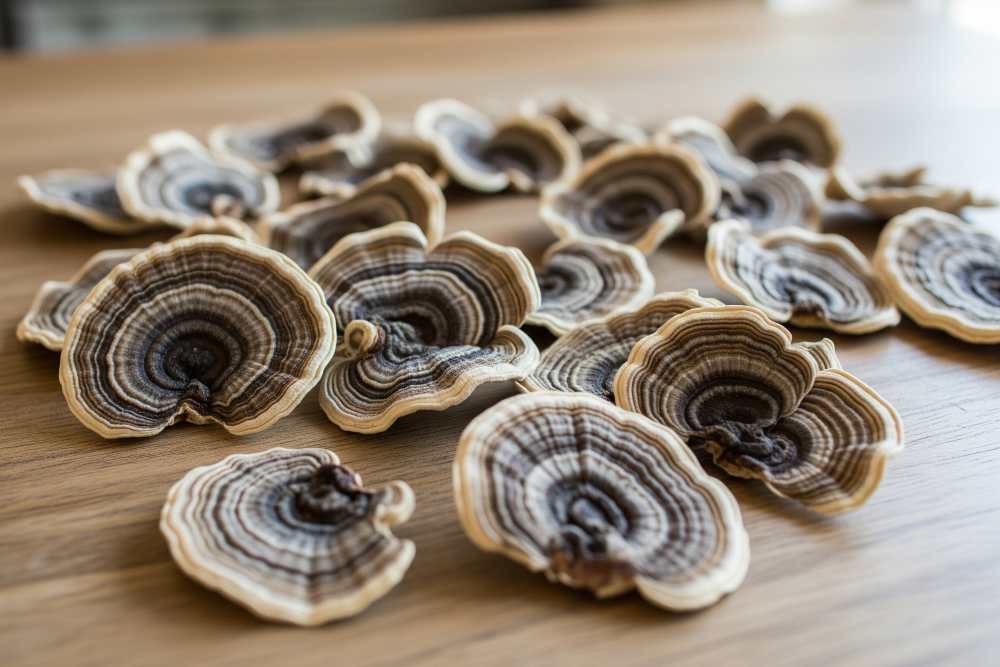
Cutting and Preparing for Use
Since Turkey Tail mushrooms are tough and fibrous, they aren’t something you chop up and eat like other mushrooms. Instead, preparation depends on the cooking method:
For tea or broth – Simply rinse, then simmer whole slices for 30–60 minutes on the stove.
For grinding into powder – Use a food-grade grinder or high-powered blender to reduce dried caps into a fine powder. This form is excellent for smoothies, coffee blends, or capsules.
For long extractions – Some herbalists soak dried slices overnight before simmering to maximize beta-glucan release.
It should be cut into smaller strips before cooking. People rarely use it fresh because the drying process makes storage easier and enhances its extractive potential.
Use These 3 Cooking Methods for Turkey Tail Mushrooms
Cooking with Turkey Tail is less about sauteing and more about extraction. Since the fruiting body is fibrous and inedible, the real culinary art lies in pulling out its polysaccharides, antioxidants, and earthy tones into a liquid medium.
these are the methods that consistently deliver both flavor and benefits:
1. Brewing Turkey Tail Mushroom Tea (The Most Traditional Use)
Tea is by far the most common way people consume Turkey Tail mushrooms. It’s simple, effective, and allows you to extract their immune-supporting compounds without eating them.
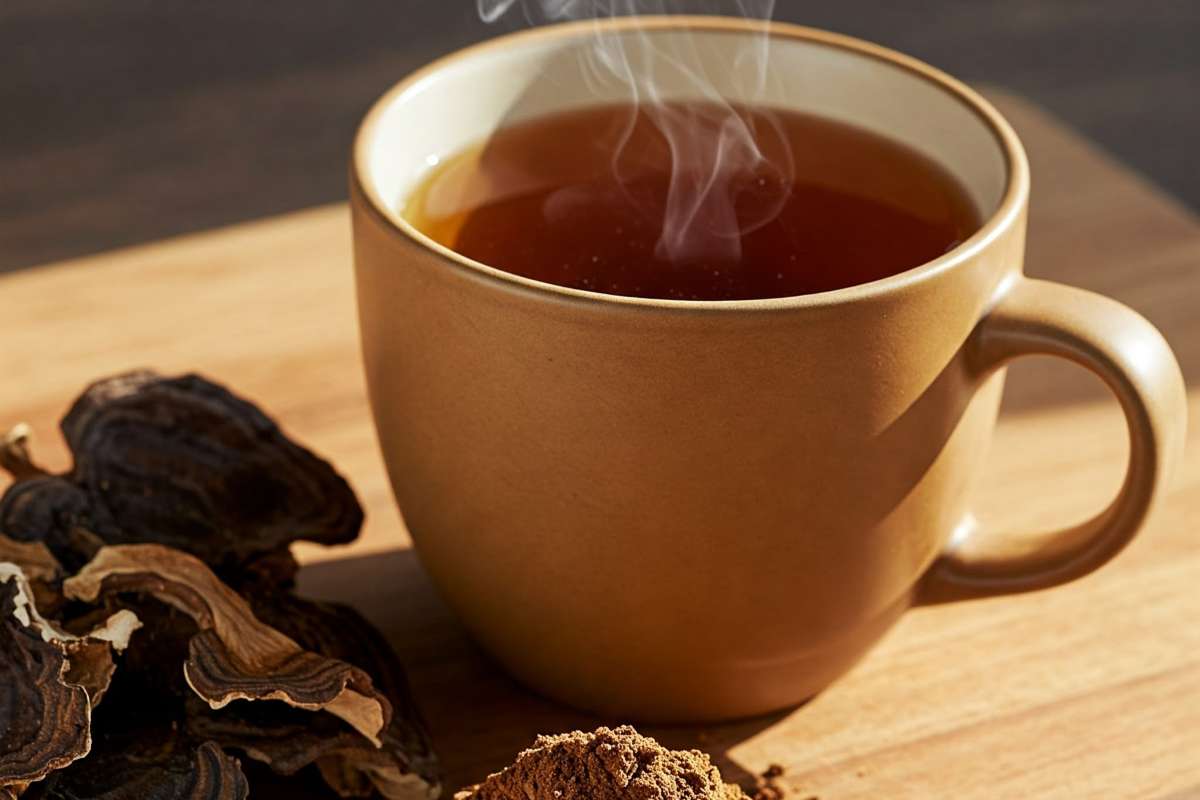
It’s one of the easiest ways to extract beta-glucans and other beneficial compounds. The mild earthy flavor pairs well with honey, ginger, and citrus. It’s also caffeine-free alternative to traditional teas, making it a great evening drink.
To make turkey mushroom tea:
Prepare the mushrooms – Use 3-5 grams of dried Turkey Tail per cup of water. Often, a small handful is enough for a cup of tea.
Simmer, don’t boil – Place the mushrooms in a pot of water and let them gently simmer on the stove for at least half an hour. Boiling too aggressively can degrade some of the beneficial compounds.
Strain and enjoy – Remove the mushroom pieces and pour the tea into your cup.
Neutralize the flavor – Turkey Tail tea is mild but slightly bitter. Add honey, lemon, cinnamon, or even peppermint for a more enjoyable taste.
2. Turkey Tail Mushroom Broth for Cooking
Turkey Tail mushrooms work incredibly well in broths. It adds a deep umami note and a hint of earthiness. This broth can be used in soups and stews. It adds a deep umami note and a hint of earthiness. This broth can be used in soups, stews, or even as a warm, nourishing drink on its own.
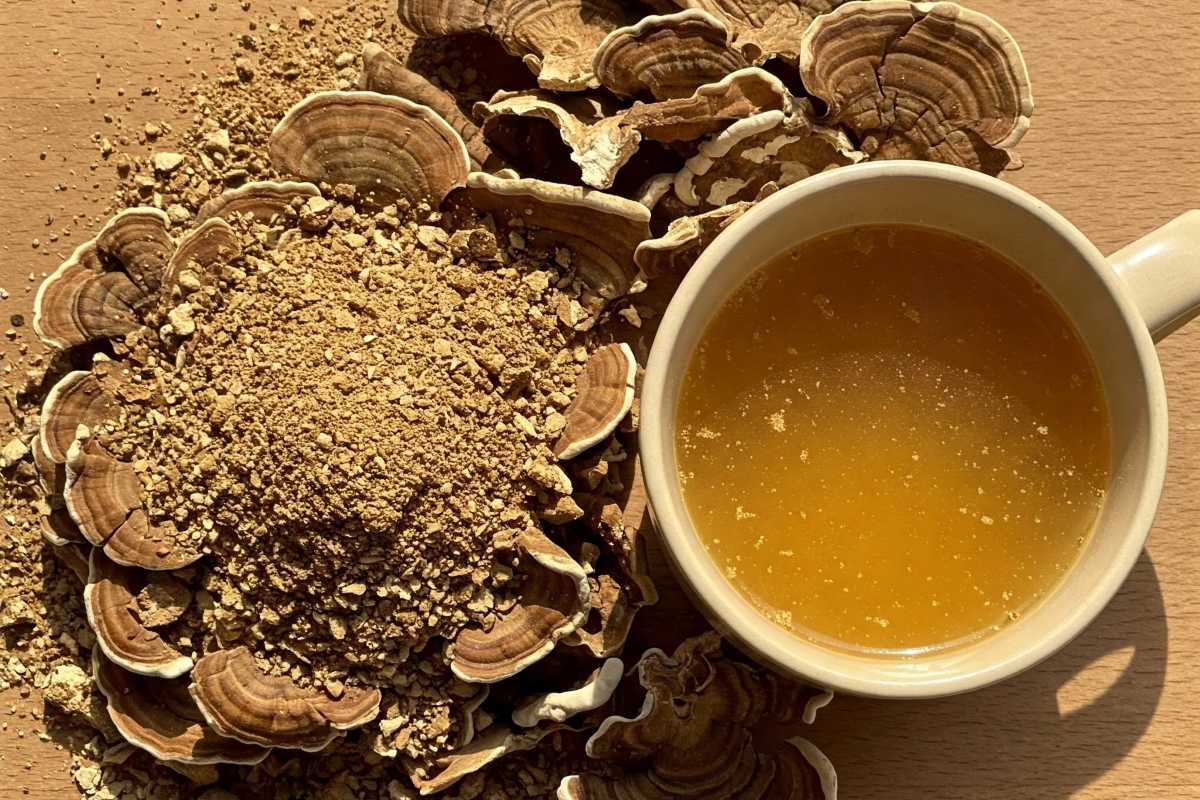
Here is how you make turkey tail mushroom broth:
- Combine the ingredients – Use 1 cup of dried Turkey Tail mushrooms per 4-6 cups of water.
- Add aromatics – Garlic, onion, ginger, and bay leaves complement the mushroom’s natural flavor.
- Simmer slowly – Let everything cook on low heat for 1 to 2 hours.
- Strain and store – Remove the mushrooms and keep the broth refrigerated for up to a week or frozen for later use.
Ways to Use Turkey Tail Broth:
- As a base for miso soup, ramen, or vegetable stew.
- To cook rice, quinoa, or barley for extra flavor and nutrition.
- As a sipping broth for an immune-boosting warm drink.
3. Turkey Tail Mushroom Powder for Easy Use
A convenient way to add Turkey Tail mushrooms to everyday foods is by using them in powdered form.
Here is How to Make Turkey Tail Powder:
- Dehydrate the mushrooms – Either air-dry them for several days or use a food dehydrator at low heat.
- Grind them finely – Use a spice grinder or high-speed blender to create a fine powder.
- Store in an airtight container – Keep away from moisture to preserve potency.
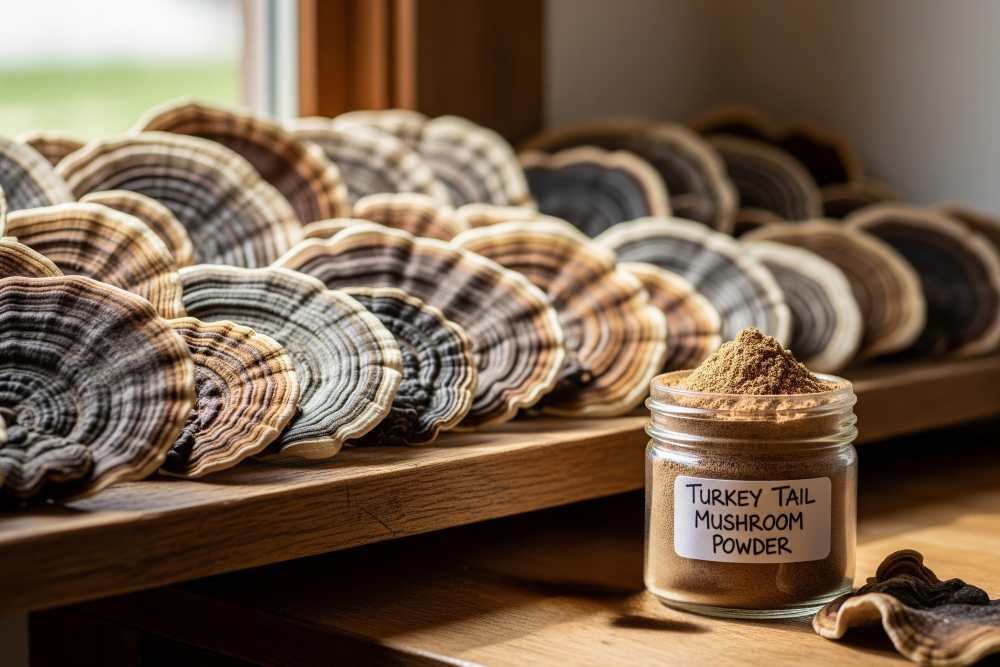
You can use turkey tail powder to:
- Stir into soups, stews, or sauces for an earthy depth.
- Blend into smoothies, coffees or protein shakes for an extra boost.
- Mix into salad dressings, spice blends, or even baked goods.
Health Benefits of Turkey Tail Mushrooms
One of the most talked-about groups of compounds in Turkey Tail are beta-glucans and polysaccharopeptides (PSP and PSK). These are complex carbohydrates that interact with our immune system in unique ways. Clinical and pre-clinical studies suggest they help modulate immune responses rather than simply boosting them, which is why they’ve been studied alongside cancer therapies and gut health interventions.
When you simmer Turkey Tail slices for tea or broth, you’re essentially performing a hot-water extraction that releases these polysaccharides into the liquid. That’s why a properly brewed tea has a darker amber color and thicker mouthfeel compared to a weak, under-simmered version.
Another area of interest is gut microbiota support. A review published in Frontiers in Microbiology notes that Turkey Tail extracts act as prebiotics, encouraging beneficial gut bacteria growth. From a culinary angle, this makes Turkey Tail an excellent companion for fermented foods like miso, kimchi, or kombucha pairings. They also work synergistically for digestive health.
To be clear, Turkey Tail tea isn’t a miracle potion. It’s a functional ingredient—something that supports wellness over time rather than offering quick results.
Final Thoughts
Turkey Tail mushrooms are an incredible addition to a healthy lifestyle, but like any powerful functional food, they should be used mindfully. They are generally safe for most people but it’s also important to prepare them properly, consume them in moderation and be aware of any potential interactions with existing health conditions or medications.





